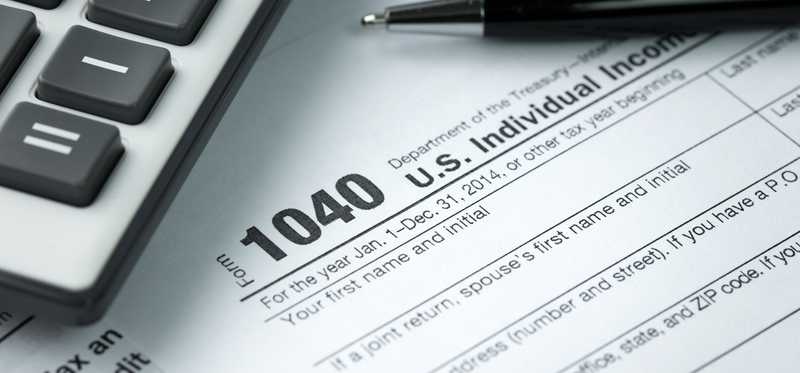10 Smart Investing Moves to Make During a Stock Market Dip

10 Smart Investing Moves to Make During a Stock Market Dip
Don't panic -- prepare
For long-term investors, stock market dips can actually be a good thing. They make stocks cheaper, after all, and lower prices are good for net buyers of stocks. Of course, it’s no fun to watch your portfolio shrink and it’s easy to get jitters over a potential stock market crash, but It’s a good idea to remember that stock market dips are a normal part of investing.
By recognizing that pullbacks are a normal and even healthy part of the stock market, you can be better prepared for when they happen and take advantage of the situation. Keep reading to see 10 smart investing moves you should make during a stock market dip.
5 Winning Stocks Under $49
We hear it over and over from investors, “I wish I had bought Amazon or Netflix when they were first recommended by the Motley Fool. I’d be sitting on a gold mine!” And it’s true. And while Amazon and Netflix have had a good run, we think these 5 other stocks are screaming buys. And you can buy them now for less than $49 a share! Simply click here to learn how to get your copy of “5 Growth Stocks Under $49” for FREE for a limited time only.
Previous
Next

1. Make a watch list
If you like buying individual stocks, it’s a good idea to have a watch list. These are stocks that you’re considering buying, but you might not be ready to do so just yet. That may be because the stock looks too expensive, you’re waiting to see how the company’s next earnings report goes, you’re waiting for more money to come in, or you’re just trying to learn more about the stock.
Watch lists are especially useful when prices fall during a stock market dip. If you were considering a stock when it was trading for $50, you’ll probably want to buy if it falls to $40 or below, for example.
The pandemic offers a great example of the value of a watch list as a number of quality companies, like Square and Wayfair, fell sharply in the early stages of the crisis even though those businesses were never in danger of going bankrupt, and, in fact, thrived during it.
ALSO READ: 4 Unstoppable Stocks to Buy If There's a Stock Market Crash
Previous
Next

2. Take advantage of tax loss harvesting
If you have some stocks you’re thinking of selling anyway, a market dip can be the perfect opportunity to do so. That’s because selling a stock you’ve lost money on offers tax advantages as the loss offsets your income.
While you shouldn’t sell a stock just to take advantage of tax losses, a stock market dip could give you an opportunity to refresh your portfolio and lower your tax bill in the process. A dip at the end of the year can be a great opportunity to consider tax loss harvesting.
Previous
Next

3. Double down on dividends
If you’re an income investor, stock market sell-offs can be even more lucrative than they are for the average investors. That’s because when stock prices fall, dividends tend to stay steady, as companies are generally reluctant to cut their dividends even during a recession.
That means that as stock prices fall, dividend yields go up, making those dividends even more valuable. While dividend yields are always changing, what matters to you is your own personal dividend yield, or how much you paid for a stock in relation to what the dividend currently pays. If you’re looking for dividend stocks that will be reliable even during a recession, start with the list of Dividend Aristocrats, which are S&P 500 stocks that have raised their dividends every year for 25 years straight.
Previous
Next

4. Check your emergency fund
A stock market dip is a good reminder to make other parts of your financial plan antifragile, and that includes having an emergency fund. Most financial advisors recommend having three to six months of expenses socked away in case you lose your job, have an unexpected medical expense, or need to make a major repair to your home.
An emergency fund is especially important during a stock market dip as recessions are concurrent with job losses, and if you’re unlucky enough to lose your job at the same moment when the stock market is crashing, you want to make sure you have a nest egg to fall back on.
ALSO READ: Is Your Portfolio Prepared for a Stock Market Crash? Here's How to Tell
Previous
Next

5. Reassess your time horizon
There’s no one perfect strategy for investing during a stock market dip, and how you do so will depend on your time horizon. Younger investors will have a longer time horizon, meaning they can hold their investments for a longer period of time, so they’ll want to be more aggressive during market dips, taking advantage of discounted stock prices.
Retirees, on the other hand, may be done putting new money into the stock market and will want to take a more cautious approach, rotating into recession-proof stocks and dividend payers, as those tend to be less likely to crash during a pullback.
5 Winning Stocks Under $49
We hear it over and over from investors, “I wish I had bought Amazon or Netflix when they were first recommended by the Motley Fool. I’d be sitting on a gold mine!” And it’s true. And while Amazon and Netflix have had a good run, we think these 5 other stocks are screaming buys. And you can buy them now for less than $49 a share! Simply click here to learn how to get your copy of “5 Growth Stocks Under $49” for FREE for a limited time only.
Previous
Next

6. Add to winners
There are two ways to add money to your stock portfolio. You can buy a new stock or you can add to stocks you already own. Buying new stocks is more exciting, but adding to your winners is often a smarter move.
Stock market dips present great opportunities to add to your top-performing stocks, as they are now on sale. It’s also a good idea to add to your winners because these are the stocks you’re most familiar with and therefore will know the best price to buy them at. For example, if you get an opportunity to buy a stock you already own below your current cost basis, it’s probably a good idea to take advantage of the discount.
Previous
Next

7. Don't panic sell
Selling your stocks can be tempting during a market sell-off. After all, if you’re watching your portfolio decline and believe it will continue that way, selling stocks seems like a smart move, but there are a number of reasons you should avoid doing that.
First, timing the market is virtually impossible, and second, if you do sell, it will be hard to know when to get back in. That means you could very easily miss out on the rebound.
Just like it’s a good idea to have a watch list, it’s also a good idea to write down your investing thesis for each stock that you own. If your thesis is still intact, then it’s probably a bad idea to sell the stock just because the market is down.
ALSO READ: Worried About a Fourth-Quarter Stock Market Crash? Make This Important Move Now
Previous
Next

8. Remember historical patterns
Market pullbacks are normal and shouldn’t scare you away from the stock market. It’s worth reminding yourself that the stock market falls by 10% roughly every year, by 15% every two years, and by 20% every four years.
Knowing how frequent a stock market crash of a certain magnitude occurs can help guide you in how to act. For example, a crash of 50% or more like the one during the financial crisis could happen only a couple of times in your lifetime, so it’s a good idea to take advantage of it, especially if you have a long time horizon.
Previous
Next

9. Have an asset-allocation plan
If you already have a watch list, you may want to take that one more step and develop a plan for how you will invest money according to that watch list. Doing so will help make you better prepared for a market pullback and ensure that you don’t miss out on the opportunity. For instance, if you have money set aside to invest, you may want to plan on increasing your position on your watch list stocks by 10% for every 10% that they fall. There’s no perfect system for buying stocks during a market dip, but thinking about what could happen ahead of time will make you better prepared for when a market pullback actually happens.
Previous
Next

10. Don't check your portfolio every day
One simple thing to do to commit to investing for the long term is to check your portfolio less frequently, and it’s especially important to do that during a market pullback.
Checking your portfolio daily during a market swoon will likely just cause anxiety and influence you to take action when no action is probably the better choice. It could lead you to make an impulsive decision that isn’t in your long-term interest. While it’s important to follow stocks that you own so you can be aware of material changes, watching your portfolio balance go up and down won’t give you any new information and can be emotionally triggering, especially if the number is getting smaller.
5 Winning Stocks Under $49
We hear it over and over from investors, “I wish I had bought Amazon or Netflix when they were first recommended by the Motley Fool. I’d be sitting on a gold mine!” And it’s true. And while Amazon and Netflix have had a good run, we think these 5 other stocks are screaming buys. And you can buy them now for less than $49 a share! Simply click here to learn how to get your copy of “5 Growth Stocks Under $49” for FREE for a limited time only.
Previous
Next

Take action
Some of the best times to invest in the past 20 years were during market crashes like the financial crisis and the pandemic, as stocks quickly rebounded after those events. Though it would have been hard emotionally and psychologically to buy stocks as the country shut down over the coronavirus pandemic, it turned out to be the right move.
In other words, as Warren Buffett famously said, it pays to be greedy when others are fearful, and the best way to do that is to have a plan of action for how you’ll invest when the next time the market dips.
Jeremy Bowman owns shares of Square. The Motley Fool owns shares of and recommends Square. The Motley Fool recommends Wayfair. The Motley Fool has a disclosure policy.
Previous
Next
Invest Smarter with The Motley Fool
Join Over Half a Million Premium Members Receiving…
- New Stock Picks Each Month
- Detailed Analysis of Companies
- Model Portfolios
- Live Streaming During Market Hours
- And Much More
READ MORE
HOW THE MOTLEY FOOL CAN HELP YOU
-
Premium Investing Guidance
Market beating stocks from our award-winning service
-
The Daily Upside Newsletter
Investment news and high-quality insights delivered straight to your inbox
-
Get Started Investing
You can do it. Successful investing in just a few steps
-
Win at Retirement
Secrets and strategies for the post-work life you want.
-
Find a Broker
Find the right brokerage account for you.
-
Listen to our Podcasts
Hear our experts take on stocks, the market, and how to invest.
Premium Investing Services
Invest better with The Motley Fool. Get stock recommendations, portfolio guidance, and more from The Motley Fool's premium services.